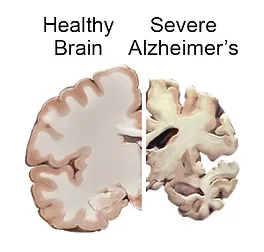Strategies for Enhancing Infant Brain Development

Infants test people as well. They analyze to see what another person will do if (insert any action a baby might do!). They figure out who they can trust (including the dog!). They rapidly learn who will care for them, help them learn and interact with them, and who won't. They will mimic the behavior of others.
Infants' RAGE to Learn
I once read a study demonstrating that babies are far more attracted to someone who will teach them something new than to those who interact with them on a surface level. (See the study, here).
An interesting article, Early Brain Development, by Phyllis Porter, M.A. [2], explains how God has wired infants' brains for rapid learning.

Her article says in part, "By the 17th week of pregnancy, the fetus already has 1 billion brain cells, more than the adult brain. These cells are proliferating at a rate of 50,000 per second. At birth, the distinct areas of the brain are all in place.
“Within each part of the brain are millions of neurons (nerve cells) that are connected to each other by synapses. These trillions of synapses and the pathways they form make up the wiring of the brain. The number and organization of these connections influence everything, from the ability to recognize letters to the maintenance of relationships. Neurons develop rapidly before birth. After birth, brain development consists of wiring and rewiring the connections (synapses) between neurons. “New synapses are formed while others are pruned away. Between birth and eight months, the synapses are formed more quickly. There may be 1,000 trillion synapses in the brain at eight months...
“Early experiences, both positive and negative, have a dramatic effect on this formation of synapses. The brain operates on the 'use it or lose it' principle. Only those connections and pathways that are frequently used are retained.
“At 3 months, the brain has the potential to distinguish several hundred spoken sounds. Over the next few months, the brain organizes itself to recognize only the sounds it hears.
“During early childhood, the brain retains its ability (plasticity) to discriminate sounds it has discarded (i.e., not yet organized). As an analogy, think of putting something into the ‘trash’ on your computer. You can still retrieve that information out of the trash as long as it has not been deleted. This is why young children can easily learn foreign languages with an accent. After age ten, this plasticity is lost (the trash was emptied). Children can still learn foreign languages, but more effort is required.
“It is from early infancy to early childhood that these vital connections are made permanent. As we mature, the brain physically changes due to outside experiences. The first three years see the most rapid changes of all of life due to the bombardment of experience (everything is new!). At this time, the brain is most flexible and prepared to learn.
“Touch, talking, tasting, seeing, and smelling all build connections if done in a loving, consistent, and predictable manner. These connections die if they are not maintained. If there are no experiences, the connections are pruned back, and the brain remains small.
“Children Raised in Deprived Environments (such as Romanian orphanages in the 1990s) experience fewer sounds, colors, pictures, interactions, and sights. Their brains are smaller than those of children who grow up in sensually rich environments within meaningful relationships. When doctors studied the brains of children from deprived environments, there is a strong resemblance to the brains of Alzheimer's patients." Romainian 'Orphans Half a million kids survived Romania's 'slaughterhouses of souls.’ GlobalPost, December 28, 2015 (by Vlad Odobescu)

What wires an infant's Brains for Learning? What caregivers do with infants, prenatally through infancy and up to three years of age, not only determines the child's preferences for good or bad, but also determines their ability to learn, and to interact socially. The more a baby learns, the more they will be able to learn the rest of their lives. They learn how to learn in infancy because their brains are wired to learn, and brain cells are retained by early learning rather than being discarded.
Since the body literally destroys brain cells that are not used as an infant, the "use it or lose it" principle is never more true than pre-birth to 3 or 4 years of age. A child needs to be presented with activities, rich learning experiences, interactions, etc. These experiences organize, arrange, and connect brain cells but do not add new brain cells. As Phyllis Porter says, "Brain cells that are not connected and organized are put in the trash bin and deleted, much like you would delete contents of your computer's trash folder."
(I encourage those who work with infants and children to read Phyllis Porter's other articles - see end notes below.)
When we, as caregivers, parents, grandparents, and teachers, put God's Word in the hearts and mouths of infants, we partner with God to "ordain strength" in them and, at the same time, increase the child's ability to learn.
Consider this: When we joyfully put the Word of God into the mouths of infants, we are equipping children with God's armor: The belt of God's Truth, the breastplate of God's righteousness, the shield of faith, God's thought that is the helmet to protect their minds, and the Sword of the Spirit—the Word of God. We are indeed equipping them to be God's little warriors, ordained by God with spiritual, physical, mental, emotional, and social strength and excellence to do Psalm 8:2.

The ancient Hebrews understood this. That is why they used Psalm 119 to teach their children the Hebrew alphabet.
End Notes and YouTube Resources
Why It is Important for Newborns to Move - Tips for Brain Growth. The Importance of Physical Activity for Children: Baby Exercise. https://www.youtube.com/watch?v=aqrNaZTR8MM
Human Connection Between Babies and the Adults in Their Lives:
https://www.youtube.com/watch?time_continue=88&v=PwwiCAKrlWM
Read, Speak, and Sing: Fun Ideas for You and Your Baby
https://www.youtube.com/watch?v=rDCQMLLFwOg
Singing, rhyming, and storytelling are other great ways to nurture your baby’s early literacy skills and promote their love of reading in the future.
For more tips and ideas, visit:
www.caringforkids.cps.ca/handouts/read_speak_sing_to_your_baby
University of Washington study: Early Learning and the Brain.
https://www.youtube.com/watch?v=yYyGyEX0CL0
Research focuses on how infant and adult brains process language, our understanding of critical periods in learning, cognitive development, and social understanding in infants, children, and adults. Video courtesy UWTV.
Dr. Andrew Meltzoff - YouTube Videos of his Research
https://www.youtube.com/watch?v=8aBbnz7hZsM
https://www.youtube.com/watch?v=AlY8DndJubo
Summary of Findings
- Children are born learning.
- Nineteen-hour-old babies in a hospital setting will imitate an adult sticking out his tongue or opening his mouth before the infant has ever seen a reflection of its own face.
- Children are wired to learn from the culture in which they are brought up. Part of this is their intense interest in socially imitating the people around them.
- "Children pay extraordinary attention to the gestures and actions of other people and use imitation to learn about the actions and rituals in their culture as well as the ways that people in their culture use tools and machines."
- Children are acutely aware of intention, integrating information not only about what a person did but what they meant to do.
- Children have an innate capacity to integrate complex information about adult behavior, intention, and approval.
- Dr. Meltzoff walks through anecdotes and data from the ~5,000 children per year seen by I-LABS.
Romanian 'Orphans': Half a million kids survived Romania's slaughterhouses of souls.’ ..... GlobalPost December 28, 2015 · By Vlad Odobescu
https://www.pri.org/stories/2015-12-28/half-million-kids-survived-romanias-slaughterhouses-souls-now-they-want-justice
Quote from this article: “Usually when you enter a room packed with cots filled with children, the expectation is of noise, chatter or crying, sometimes even a whimper. There was none, even though the children were awake. They lay in their cots, sometimes two to each cot, sometime three, their eyes staring. Silently. It was eerie, almost sinister. The smell, with which I became familiar in the months and years visiting the institutions throughout Romania, was rank.” Staff ignored the children in their rusting metal cots. There were no toys or books around, and the walls were empty of paintings and murals, he recalled. “They were inhuman,” he said. “Stalls where children, babies, were treated like farm animals. No, I am wrong — at least the animals felt brave enough to make a noise.” Most of these children grew up to be dysfunctional adults.
Millie has included - and will be adding more and more fun, proven, and effective ways to work with children at home, child care, Sunday school, and preschool settings.
